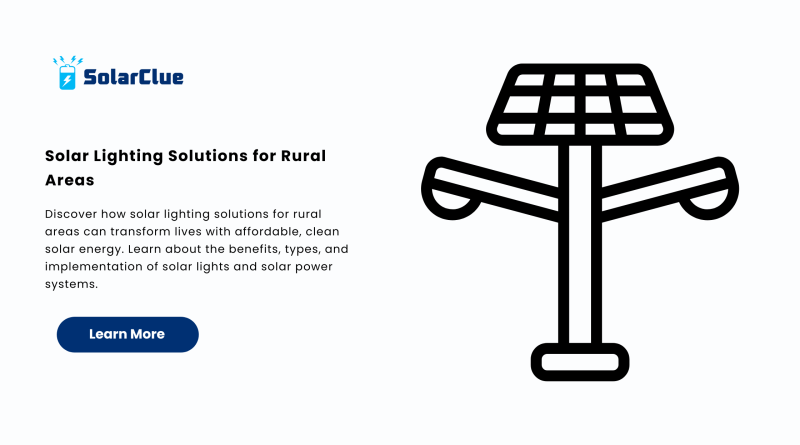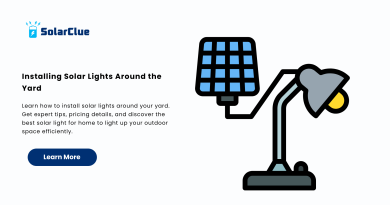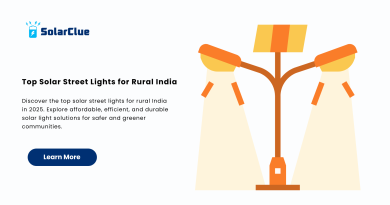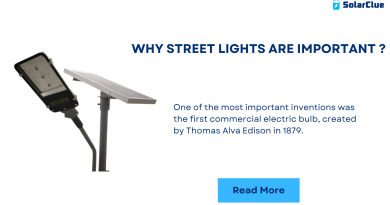Solar Lighting Solutions for Rural Areas
Access to electricity remains a major challenge in many remote and underserved regions across the globe. Without reliable power, basic needs like lighting, education, healthcare, and safety are severely compromised. That’s where solar lighting solutions for rural areas come into play—offering a clean, cost-effective, and sustainable alternative to traditional energy sources. By harnessing solar energy, rural communities can illuminate their homes, streets, and schools without depending on unstable or non-existent grid connections. This article explores the transformative potential of solar power and how it’s reshaping lives in the most impactful way.
Table of Contents
- 1 The Urgent Need for Solar Lighting in Rural Communities
- 2 Understanding Solar Energy and How It Works
- 3 Types of Solar Lighting Systems for Rural Use
- 4 Key Benefits of Solar Lights in Rural Areas
- 5 Economic and Social Impact
- 6 Challenges in Implementation
- 7 Overcoming Barriers with Innovative Models
- 8 Choosing the Right Solar System for Your Needs
- 9 Installation and Maintenance Tips
- 10 Environmental Benefits of Rural Solar Adoption
- 11 Government Initiatives Supporting Solar in Rural India
- 12 Role of NGOs and International Organizations
- 13 Cost Analysis: Is It Worth It?
- 14 Success Stories from the Field
- 15 Future of Solar Lighting in Rural Areas
- 16 Final Thoughts
- 17 FAQs
The Urgent Need for Solar Lighting in Rural Communities
Rural areas across the world often struggle with unreliable or completely absent electricity infrastructure. In such regions, solar lighting solutions for rural areas offer a sustainable, affordable, and impactful alternative to traditional power sources.
Access to electricity is vital for improving quality of life, education, healthcare, and safety. Solar energy not only brings light to homes and streets but also empowers communities by providing them with tools to progress socially and economically.
Understanding Solar Energy and How It Works
At the core of solar lighting solutions lies solar energy — a renewable, eco-friendly resource harnessed from the sun. A solar power system typically consists of photovoltaic (PV) panels that convert sunlight into electricity, batteries for storage, and LED lights that provide illumination.
This system is particularly well-suited for off-grid applications because it operates independently of the central power grid. This independence makes it an ideal choice for rural communities where grid expansion is either economically or technically unfeasible.
Types of Solar Lighting Systems for Rural Use
1. Solar Home Lighting Systems
These compact systems provide sufficient lighting for small homes using LED bulbs, a battery, and solar panels. They’re cost-effective and ideal for indoor lighting.
2. Solar Street Lights
Used for outdoor lighting, these systems improve safety and mobility during nighttime in rural roads and public areas. They operate automatically and require minimal maintenance.
3. Portable Solar Lamps
Small, affordable, and easy to use, these are perfect for students and households with limited needs. They charge during the day and provide light at night.
Key Benefits of Solar Lights in Rural Areas
Solar lights bring several advantages that cater directly to rural needs:
- Cost-effective: Once installed, the recurring cost is minimal.
- Eco-friendly: Uses clean energy with zero emissions.
- Low Maintenance: Most systems require little to no upkeep.
- Safe Lighting: Reduces fire hazards compared to kerosene lamps.
- Education Boost: Children can study after dark.
Economic and Social Impact
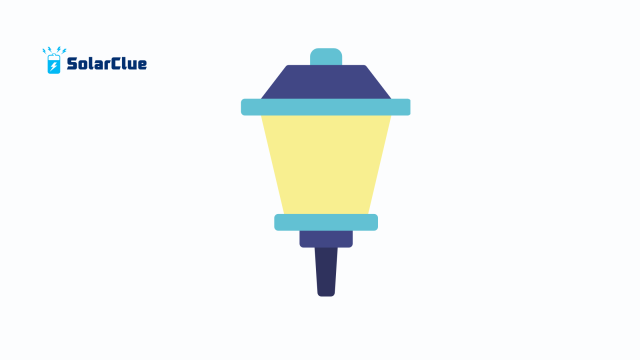
With reliable solar light for home, families can extend their productive hours. This change directly impacts education, income opportunities, and health outcomes. Solar-powered clinics, for example, can operate safely at night, and local businesses can work longer hours.
Moreover, these solutions create employment opportunities in manufacturing, installation, and maintenance of solar systems.
Challenges in Implementation
While the benefits are clear, there are hurdles to large-scale deployment:
- Upfront Costs: Despite long-term savings, initial investment may be high.
- Lack of Awareness: Rural populations may be unfamiliar with solar power technologies.
- Technical Training: Need for trained personnel for installation and repair.
- Policy Support: Inadequate government incentives can slow adoption.
Overcoming Barriers with Innovative Models
Governments, NGOs, and private companies are now working together to roll out programs that subsidize solar systems or offer pay-as-you-go models, making them more accessible.
Training rural youth in solar technology also ensures a local support system, improving sustainability.
Choosing the Right Solar System for Your Needs
When selecting a solar power system, consider:
- Energy requirement (lights, fans, charging phones)
- Available budget
- Roof space or ground area for panel placement
- Warranty and brand reputation
Many providers, like SolarClue, offer customized solutions based on these factors.
Installation and Maintenance Tips
For optimal performance:
- Install panels where sunlight is maximum
- Clean panels regularly
- Check battery levels and connections periodically
- Use energy-efficient LED lights
This ensures your solar lighting solutions last longer and perform efficiently.
Environmental Benefits of Rural Solar Adoption
Beyond individual benefits, widespread adoption of solar power reduces dependency on fossil fuels, cuts carbon emissions, and contributes to global climate goals.
Communities with robust solar energy infrastructure can become energy independent, environmentally sustainable, and resilient to climate shocks.
Government Initiatives Supporting Solar in Rural India
The Indian government has launched several programs, including:
- Saubhagya Scheme
- PM-KUSUM
- Solar Park Schemes
These initiatives aim to provide energy access to all and promote clean energy solutions, helping rural communities transition to solar systems.
Role of NGOs and International Organizations
Organizations like Barefoot College, SELCO, and the UNDP have been instrumental in training rural women and men to become solar engineers. Their efforts have not only brought light but also empowered communities.
Cost Analysis: Is It Worth It?
A basic solar light for home setup costs between ₹3,000–₹10,000. Though this might seem steep initially, the savings on electricity bills and kerosene, along with durability, make it a cost-effective choice in the long run.
Success Stories from the Field
In Rajasthan, villages powered by solar lighting solutions have seen reduced crime rates and improved school attendance. Similarly, in parts of Africa, microgrids powered by solar energy have revolutionized entire communities.
Future of Solar Lighting in Rural Areas
The future looks promising with advancements in battery technology, decreasing solar panel costs, and increasing awareness. If supported by consistent policies, solar lighting solutions for rural areas can become the norm, not the exception.
Final Thoughts
Solar lighting solutions for rural areas present a transformative opportunity to address energy poverty sustainably. With the right awareness, support, and innovation, they can light up not just homes but futures.
To explore reliable and affordable solar power systems, make sure to visit us at solarclue.com. For more insightful blogs and energy tips, head over to blog.solarclue.com — let’s light the way, together!
FAQs
Q1. What are the benefits of solar lighting in rural areas?
A1. They provide clean, affordable, and reliable lighting that supports education, healthcare, safety, and economic activity.
Q2. How much does a basic solar lighting system cost?
A2. It typically ranges from ₹3,000 to ₹10,000 depending on the size and features.
Q3. Are solar lights reliable during cloudy weather?
A3. Yes, modern solar power systems come with battery storage to provide power even during non-sunny days.
Q4. Can solar lighting systems run appliances?
A4. Smaller systems are ideal for lighting and phone charging. Larger solar power systems can run fans, TVs, and more.
Q5. How long do solar lighting systems last?
A5. With proper care, panels last 20-25 years, and batteries 5-7 years on average.

